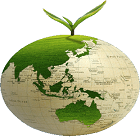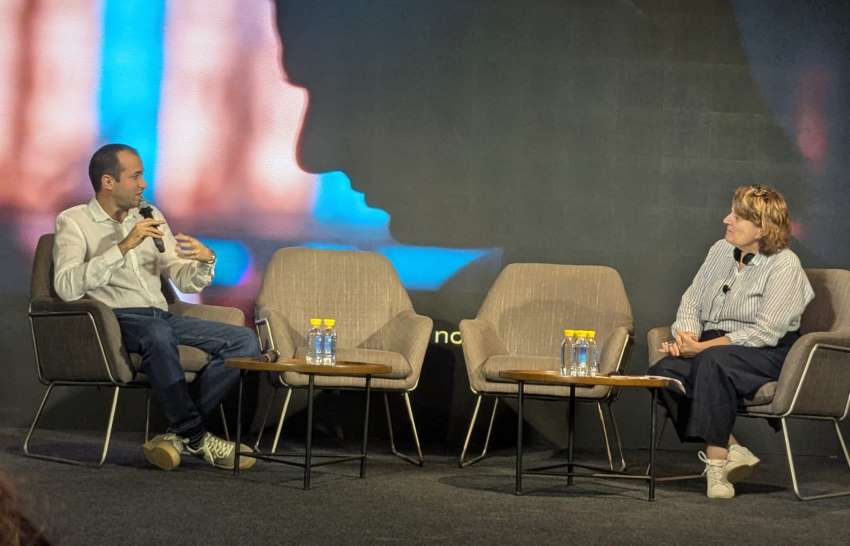FW
Inspired performances by supply chain partners in FY 2015-16 contributed to the best year to date for Sri Lankan apparel powerhouse Brandix, which honoured its top vendors at a gala Vendor Summit in Sri Lanka recently. The top 100 vendors from the 350 that accounts for Brandix’s annual raw material spend attended the summit, half of them from 14 overseas locations. Presenting these key suppliers with an insight into the dynamics that propel the industry and a glimpse into the future, Brandix forecast it would double sales in the next five years, through a concentration on speed, quality, innovation and price.
Brandix had 530 vendor partners on its supply chain when the Group hosted its last Vendor Summit in 2011. While its business grew by 63 per cent in the five years that followed, the number of vendors supplying raw materials reduced to 350, and could fall to 150 by 2020, according to the organisers.
Said Brandix Group Chairman Priyan Fernando in his keynote address titled ‘A journey to best-in-class,’ their industry is one of intense competition where the dynamics are highly emotional on the one hand, and quite rational on the other.
Meanwhile, Brandix CEO Ashroff Omar cautioned that 2016 would be a ‘rough year’ given the headwinds that the retail industry is facing, but said the Group is confident it will ride the storm successfully and prevail with the support of its supply chain partners.
Bangladesh’s readymade garment exports to Turkey have declined by 7.67 per cent in the first 10 months of the 2015-2016 fiscal year. Fall in exports earning is mainly due to two reasons: Turkey’s economic slowdown and Turkey’s recent decision to impose duty on apparel imports. In September 2011, Turkey imposed a duty at a rate of 17 per cent on apparel imports from the least developed countries, including Bangladesh, mainly to safeguard its readymade garment and textile industry. Since then, Bangladesh’s readymade garment exports to Turkey have been declining.
Following readymade garment products, jute and jute products are one of Bangladesh’s major export items to the Turkish market. Export earnings from these two products also saw a downtrend in the 2015-2016 fiscal year. In the 2014-2015 fiscal year, the country’s export earnings from readymade garments to Turkey decreased by 21.58 per cent from the previous fiscal year.
In recent times Turkey has been trying to increase the capacity to meet the domestic demand for readymade garments and as such a duty was recently imposed on imports. Shipments dropped to $488.08 million in fiscal 2014-15 from $622.37 million the previous year. The Turkish economy is struggling due to the refugee crisis in Europe.
Bangladesh will reduce corporate tax to 20 per cent from the existing 35 per cent for the readymade garment industry. The readymade garment sector is one of the main exporting sectors of Bangladesh. This sector is making important contributions to GDP growth and employment generation and says the reduced tax rate will ease the burden and help it become more competitive.
During July-April of the current fiscal year, Bangladesh’s garment export earnings stood at $27.6 billion compared to $25.3 billion during the same period of the last fiscal year. Export earnings from woven garments and knitwear recorded an increase of 12.7 and 7.3 per cent respectively. Notably among the main export markets exports to both the USA and the Euro zone have increased.
Bangladesh is providing substantial tax benefits to the apparel sector, acknowledging its contribution to the economy. The textile sector is also being encouraged. Addressing its demands, as well as to help it to move forward, duty on stripping chemicals will be reduced to 15 per cent from the existing 25 per cent. Duty on flax fiber and spandex or elastraometrics, applicable now at 10 per cent, will be reduced to five per cent.
Arvind OG Nonwovens has launched five brands for bag house filtration in India. The five newly launched brands are: Fiberlox, Duotech, Checkstatic, Glasstech and Mircofelt. Arvind OG Nonwovens is a joint venture between Arvind and the Japan-based OG Corporation. It has installed custom-built machines designed to achieve Japanese quality standards and capable of handling various fibers such as M-aramid, homopolymer acrylic, poly-phenelyene sulfone, polyimide, polypropylene and polyester.
The five brands will make Arvind OG a player with the largest portfolio of world class products manufactured in India for bag house filtration. The joint venture manufactures high quality nonwoven fabrics using needle-punch technology for bag house filtration. The joint venture has the goal of manufacturing and selling the first Japanese-Indian non-woven fabric products. The factory is located on the outskirts of Ahmedabad and it will expand the goods it produces sequentially from non-woven fabric for dust collection filters to non-woven fabric for car upholstery materials and create a sales network based in India.
OG Corporation is a specialised trading company that sells, exports, imports and manufactures a variety of high value products in Japan and world-wide. The main products include dyes, pigments, dyeing chemicals, industrial chemicals, paints, raw resins, resin products, pharmaceuticals, functional materials, foodstuffs, machinery and equipment, related software products and real estate leasing.
"June 5 th was World Environment Day, a day when United Nations wants everyone to reflect on ours and others evil doings towards the environment. This year the theme was: Zero tolerance for illegal trade in wildlife. Wildlife here is not restricted to animals only; it includes everything grown in the wild including plants, fungi, deserts etc ."

June 5th was World Environment Day, a day when United Nations wants everyone to reflect on ours and others' evil doings towards the environment. This year the theme was: Zero tolerance for illegal trade in wildlife. Wildlife here is not restricted to animals only; it includes everything grown in the wild including plants, fungi, deserts etc. The 2016 theme highlights the fight against illegal trade in wildlife. Its slogan ‘Go Wild for Life’ is aimed at encouraging everyone to spread the word about wildlife crime and the damage it does, and to challenge all those around you to do what they can to prevent it.
Fashion and environment

Indeed, one aspect of fashion and wildlife is fur and fabrics made from animal skin. But the focus here is more eco-friendly clothing materials since we relate more to cotton and textiles than fur in everyday life. According to Shani Himanshu and Mia Morikawa of 11.11/eleven eleven, the true cost of a garment lies not in the price tag, but in the impact its production has had on the environment. As per, Earth Pledge, an NGO, an average American throws away nearly 70 pounds of clothing every year. And at least 8,000 chemicals are used to change raw materials into textiles and 25 per cent of the world's pesticides are used to grow non-organic cotton. These may just be numbers, but the irreversible damage to people and the environment’ is what needs attention.
For years, eco-friendly brands and designers have pleaded for sustainable fashion. But if numbers are to be believed the message hasn't reached the ears of fashion lovers and consumers. No one sees the ugly truth behind the glamour of fast fashion and designer clothes. In fact, fashion industry is the second largest polluter in the world.
As Dilip Kapur, President and Founder of Hidesign puts it, fashion is critical to involve the young in environmental activities. Ecology is not just for the serious academician for it affects all of us and what is the best way to take the message forward than fashion: cool, aspirational and what makes us all look the way we want.
Sustainable fashion the way forward Sustainable fashion is the way to combat the bad reputation earned by the industry. Use of environment friendly materials and socially responsible methods of production is what defines sustainable fashion. So, what does the industry think about the practice and feel about the environment.
Already there are high fashion brands like Stella McCartney that are frontrunners in sustainability and more surely will join for a more sustainable fashion future feel experts. The industry can contribute by using natural materials, natural dyeing methods, recycled materials, zero water usage dyeing methods etc. Less usage of electricity generated from conventional means will also be a step forward to save the environment.
Often, the industry jumps on the bandwagon to sell more and many so-called ecological collections by spending big on PR initiatives but very rare are designers like Stella McCartney who live up to their ideal. However, these behavior and attitudes are changing worldwide and one can expect it will change in India also. By making eco-friendly clothes with organic raw materials, organic dyes, high quality clothes made from recycled and reused articles, use of solar power plants as an alternative power source to minimise pollution, the fashion industry can play a significant role in minimizing the carbon footprint.
Turkey is keen on acquire international brands with strong marketing networks abroad, Istanbul Apparel Exporters Association (İHKİB) Chairman Hikmet Tanrıverdi announced recently. Tanrıverdi says the Ministry of Economy was already working on potential procurements. He stressed the importance of design in different sectors and said Turkey should focus on design in its growth policy. He pointed out design can add value to a product and added that consumers are always looking out for different products so it is important to catch up with their demands.
He says there are thousands of companies that produce but do not have any designing projects. Turkey should bring these companies and designers together to set up models they can collaborate. One cannot compete with the world by producing cheap goods so to outdo countries that have cheap labour they should outdo through their designs.
The İHKİB chairman added since Turkey has the know-how, it can acquire international brands that have strong marketing networks. He said the Ministry of Economy was working on international brand procurement while Eximbank provided long-term loans but suggested a relaxation in loan conditions. The İHKİB chairman said there were currently 703 research and development centres and 115 design centres in Turkey, which clearly emphasises the importance of design in the sector.
He also noted by 2023 the textile sector is targeting a total of $50 billion in exports, of which products worth $30 billion will be produced in Turkey, while the rest will be designed in Turkey and produced abroad.
According to the head researcher at the Malek Ashtar University of Technology, Mohammad Reza Sovizi, Iran has acquired the technical know-how to produce polyethylene terephthalate (PET). Said the assistant professor of analytical chemistry that they have been able to indigenize the production of the petrochemical catalyst and Iran is the first country in the region to acquire self-sufficiency in the production of this chemical item which used to be imported.
According to their estimates, this has saved Iran $22 million (annually). Petrochemical industries is among the strategic, and parent industries of Iran in and has achieved great development in this sphere. With regard to abundant raw materials found in Iran, the country has a great potential for generating income and promoting sustainable employment by relying on the petrochemical industries.
Pakistan’s projected 10.7 per cent growth in exports for fiscal year 2016-17 runs contrary to the government’s ambitious plan to take export earnings to $35 billion by the end of 2017-18 under the three-year Strategic Trade Policy Framework.
Experts say, the $35-billion target, which was set just two months ago, needs a much more rapid rise in annual earnings and a meager 10.7 per cent growth will not be sufficient to meet the goal. Under the annual development plan released by the federal government with the budget for 2016-17, exports in the new fiscal year are projected to rise 10.7 per cent to $24.8 billion from an estimated $22.4 billion in 2015-16.
Meanwhile, imports are forecast to grow 14.7 per cent to $45.2 billion in the upcoming fiscal year 2016-17 compared to an estimated $39.4 billion in the outgoing year 2015-16. Consequently, the trade deficit will be $20.4 billion in 2016-17 as opposed to a projected $17 billion in 2015-16.
Experts, however point out that the government wasted an entire year in framing the Strategic Trade Policy Framework 2015-18 and now it has set only a 10.7 per cent export growth target for the second year of the framework. In this scenario, the country will find it extremely difficult to hit $35 billion in export earnings by the end of fiscal year 2017-18.
Commented an official of the Ministry of Commerce, that the $35-billion export target is unlikely to be achieved by June 2018; there must be at least 30 per cent growth each year to meet this goal.
Italians are crazy about jeans and have on an average six pairs in their wardrobe. Denim skirts and jackets are also popular with both Italian men and women, who possess on an average a greater number than their counterparts in China, Germany, and the UK.
In Italy an informal look in the workplace is no longer restricted to casual Fridays as in the UK, where just 16 per cent of respondents wear jeans to work. At least 52 per cent of Italians wear denim regularly and 45 per cent wear jeans or denim shorts at least five times a week, compared to 30 per cent in Germany.
A vast majority of Italian consumers buy clothes when they are on sale or during special promotions, while over one in three are willing to sacrifice quality to cost. Buying clothes that are eco-friendly is a priority for 57 per cent of Italians, particularly in the over-35 category; this group considers cotton to be the safest fiber for the environment followed by wool and silk. Cotton is considered the most authentic fiber by 85 per cent of respondents and the most reliable and sustainable by 80 per cent.
Comfort and quality are the most important factors in determining choice, followed closely by price.
Designers are creating smart clothing and beginning to push the boundaries of utility for the next generation’s pioneers who plan to leave Earth for Mars.
Private companies are latching onto fashion trends that seem to move in the direction of the nascent space apparel market. And space companies are prepared to meet them half way. Virgin Galactic conscripted Adidas and Japanese designers Yohi Yamamoto to partner and design a new kind of space suit that will let tourists withstand spaceflight while looking fly. And SpaceX has pulled in model Karlie Kloss to show off duds being created by legendary costume designer Jose Fernandez.
Meanwhile, NASA is revamping their spacesuits to allow astronauts to move around on the surface of other worlds more safely and comfortably. In case it wasn’t already obvious, this new design is in line with the agency’s current focus to send astronauts to Mars - and allow them to live and work in a permanent outpost on the red planet.
This is significant because settlers will need specialised clothing to facilitate their day-to-day activities on other planets. The notion of a good-for-all-season uniform ceases to make sense when behaviors become too varied. There will need to be varieties of clothes outfitted with varieties of technologies. We can reasonably expect different types of devices to run these different garments as closed systems. A good example of the hardware required to accomplish this actually debuted at New York Fashion Week this year. Intel’s Curie Module incorporates bluetooth, a gyroscope, motion sensors, batteries, and 80 kilobytes of RAM. For the moment, it makes dresses light up. It could do much more.












